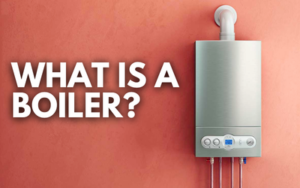Used for centuries, in-floor or radiant floor heating systems are a convenient method to evenly warm your entire flooring, not only scattered spots. In-floor heating systems warm the room from the bottom up, first heating the feet and body. Radiant heating systems cannot only add comfort to your home, but they can also cut costs. Choosing the right in-floor unit can considerably decrease your energy bills.
The Two Widely Used In-Floor Heating Systems
One of the most popular types of radiant heat, hydronic in-floor heating systems allows users to control heat flow and temperature to specific areas of the room. This type of heating works by pumping hot water from a boiler into a tubing system that is built underneath the floor. Hydronic heating systems are the primary pick for larger homes and can be used with a wide array of flooring materials, from wood to concrete. Hydronic in-floor heating systems can be linked with oil, electricity, geothermal, or solar electricity.
The installation of this radiant energy system is more complex and has higher startup costs. However, once installed, an appropriately designed hydronic flooring unit can have a long lifespan.
Electric in-floor heating systems are ideal for warming smaller areas in your home such as the kitchen or bathroom. With electric radiant floor heating, electric cables are generally constructed directly into your flooring. There are also systems available that incorporate mats of electrically conductive plastic. This type of heating system can be implemented beneath several flooring types, including stone, tile, hardwood, concrete, in addition to carpet. Electric in-floor heating systems are equipped with thermostats that assist in the regulation of fuel consumption and temperature. These radiant units are extremely simple to install, as they require fewer parts to function. They are also much less expensive to install. Electric in-floor heating systems are very easy to maintain.
Electric radiant heating does have negative aspects, however. Although they are excellent for heating small spaces, these systems are not cost-efficient enough to heat your whole home. While the initial cost is minimal, electric heaters can typically add to your electric bill as opposed to decreasing it.
Two Rarer Forms of In-Floor Heating Systems
Because it can be quite expensive, air-heated radiant flooring is another system that is not often used in residential structures. Air does not hold heat well, thus making this system operate for longer hours. Air heated in-floor systems can be installed with solar air heating, but the problem is the units would only be able to run during the daytime hours when heating amounts are lower. Due to the ineffectiveness of attempting to warm an area with a traditional furnace by pushing air beneath the flooring, the profits of solar heat during the daytime are outbalanced by the negatives of using the conventional heating system at nighttime.
The rarely used wood-burning radiant flooring system is similar to hydronic heating, but instead of using a boiler, it utilizes a wood box to warm up water to move through the system. The hours of heating you can acquire from your wood box will depend on its size. The average time period is 12 to 96 hours. The inconvenience of this system is one reason that it is seldom used as the only source of in-floor heating in a home.
If you are ready to have an in-floor heating system installed, contact us here at Heat Source Mechanical. We can design the most highly efficient system to keep you toasty warm this winter. Still not sure what to purchase? We are always available, and happy to answer any questions you may have about our products and services! Call us today!













